If you’re like me, you learn by making mistakes. You break things; you hurt yourself, you cuss and swear and grind through and eventually, you learn what works and what doesn’t. Sometimes there is some glory in all of this but most of the time it’s an expensive and painful lesson to learn.
This post is written to help spare you some of this financial burden and ego bruises or at least give you some insight as to what others on the road expect and how you can be knowledgeable and more the wiser.
My passion for off road driving is out exploring old mining trails and historical sites and seeing the summits of magnificent mountains. Your adventure may be mudding or wheeling or just tearing up farm and utility trails. Either way, I hope this helps you have an exciting time and enjoy what you love doing.
Off road driving safety tips
There are a few “must-haves” before you head out on the trails. Check out our essential safety items for off road driving. Items such as gloves, flashlight, food, water & snacks are crucial. Things will break, wheels will get stuck, it will get dark on you, and you want to be ready, and with these essentials, you will have the tools to conquer those trails.
Preparing for your off road adventure
Preparation is key to a successful experience. Before heading out, give your vehicle a look over/inspection. Pilots call this the walk-around, and it’s a good habit to get into as it builds a strong safety culture. When you’re up flying you don’t want anything broken to make things worse, same when you’re out wheeling across a summit – you want to know and rely on your equipment and get to know it well. So get in the habit of having a walk around before you hit the trails.
Check your fluids
Check your radiator levels. 4×4 wheeling puts a lot of stress on your engine, and you want to make sure to have proper coolant levels. Coolant should be properly mixed and depending on your location may be seasonal mixtures. Follow what your car manufacturer recommends in your owner’s manual.
Check your windshield washer fluids & top off. Dirty windows are a sign of having fun on the trail but seeing out the window is more important. Make sure your windshield wiper blades are in decent shape too.
Check your oil. Some vehicles are notorious for burning oil. Top off. If it’s time for your oil change, get that done before you go off on any long trips. Follow the oil change recommendations in your owner’s manual.
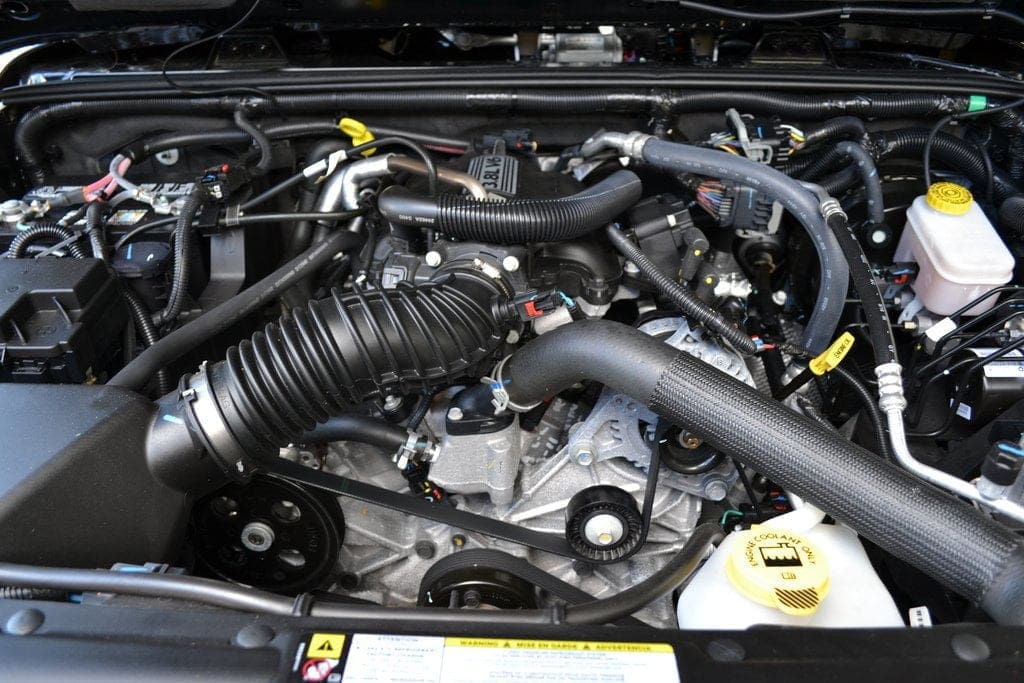
- Check Oil – verify it’s at the right level and doesn’t look dirty.
- Inspect Coolant Levels – should be up to a marked level.
- Windshield wiper fluid – top off and make sure it’s full.
- Verify No leaks, broken hoses, spills, or oil spots.
Inspect your vehicle
Walk around and inspect your vehicle. Make sure everything is secured, not leaking fluids, fastened down and sturdy.
Check your tires, make sure they’re up to recommended inflation for getting to your trails and if you’re so inclined, drop air pressure while on a trail or out crawling – remember to “air up” when done. You do NOT want to drive highway speeds with under-inflated tires.
If you must drive to your location, make sure your sway bar disconnects / quick disconnects are connected and locked. When you get to your off-roading place, depending on requirements, you can disconnect these. Just be SURE to reconnect before you head back out on highway speeds.
Make sure your headlights & taillights all function and work. Headlights should be adjusted for proper height.
Regular service – The list for checking your vehicle can go on forever. Make sure you have your vehicle regularly serviced according to the owner’s manual that is usually sitting in pristine condition in your glove box.
Plan for safety
Make sure all seats, seatbelts, restraints, and safety devices are fully functioning. If you take your doors off make it a habit of verifying everyone has a seatbelt on before you even put it in drive! If you’re driving without doors/roof make sure everyone in the vehicle has proper wind, eye, and ear protection as well as sunscreen and bug repellent.
Gearing up
For some people, this is what off road driving is all about – gearing up. You know what I mean, putting on those 50″ light bars, swapping out from factory tires to those 35″ MTs and customizing your vehicle to make it yours. We love gearing up but don’t forget your 4×4 out of the factory is usually a competent machine, unless you’re seeking extreme rock crawling or are heading out to difficult trails and crazy adventures, I recommend getting to know your vehicle before you gear it up for the sake of gearing it up. Have some fun while you drool over your future possibilities.
Great 4×4 Upgrades
Lightbars & addon lights – If you do lots of early mornings or late arrivals – that light bar may be a wise investment. Just remember they can be noisy if you use your vehicle on the road at highway speeds. These will help you illuminate the way and provide additional safety while out in the evening hours.
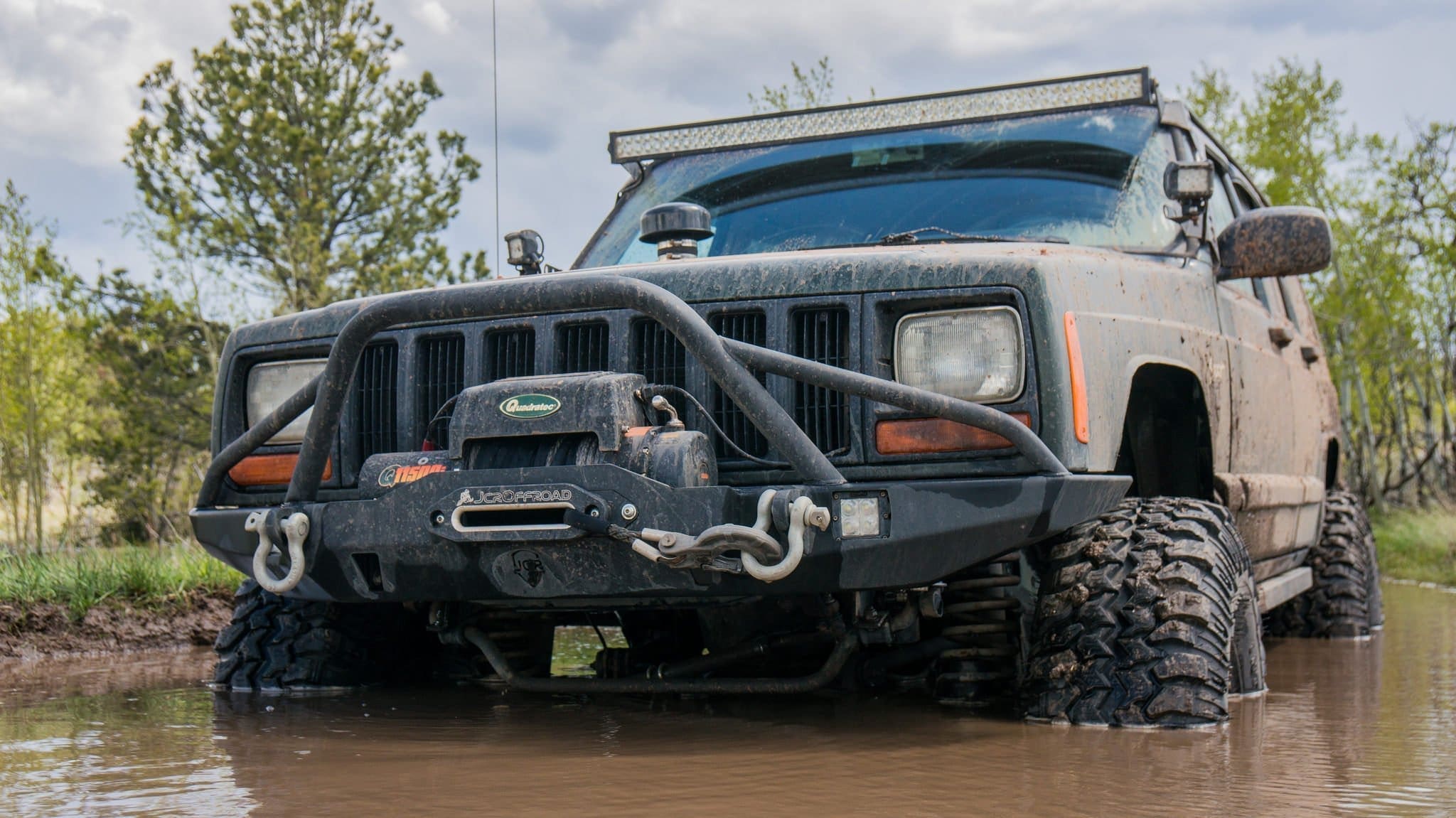
Mud Tires, All-terrain tires, hybrid tires – If you’re looking for some help on choosing the best offroad tires, check out our off road tire guide – it’s focused on Jeep but applies (almost) universally to any vehicle. Moving up to 33″ or larger tires can open a world of opportunity for rock crawling or adventurous trail riding. The added clearance helps your vehicle climb over obstacles, and specific tire designs can help improve traction and control based on your mission.
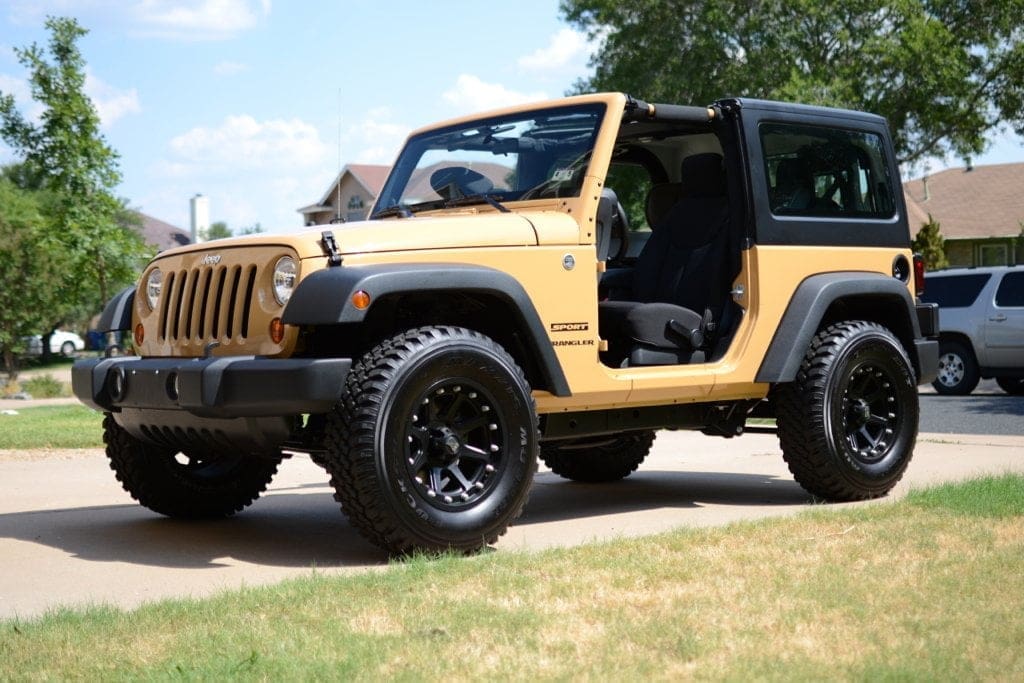
Skid plates & body armor – If your adventure includes rock crawling or driving over extremely rough terrain, why don’t you check out our in-depth article on steel vs. aluminum skid plates – Skid plates are protective armor installed to help protect critical components and help you keep you on the trails or climbing those rocks.
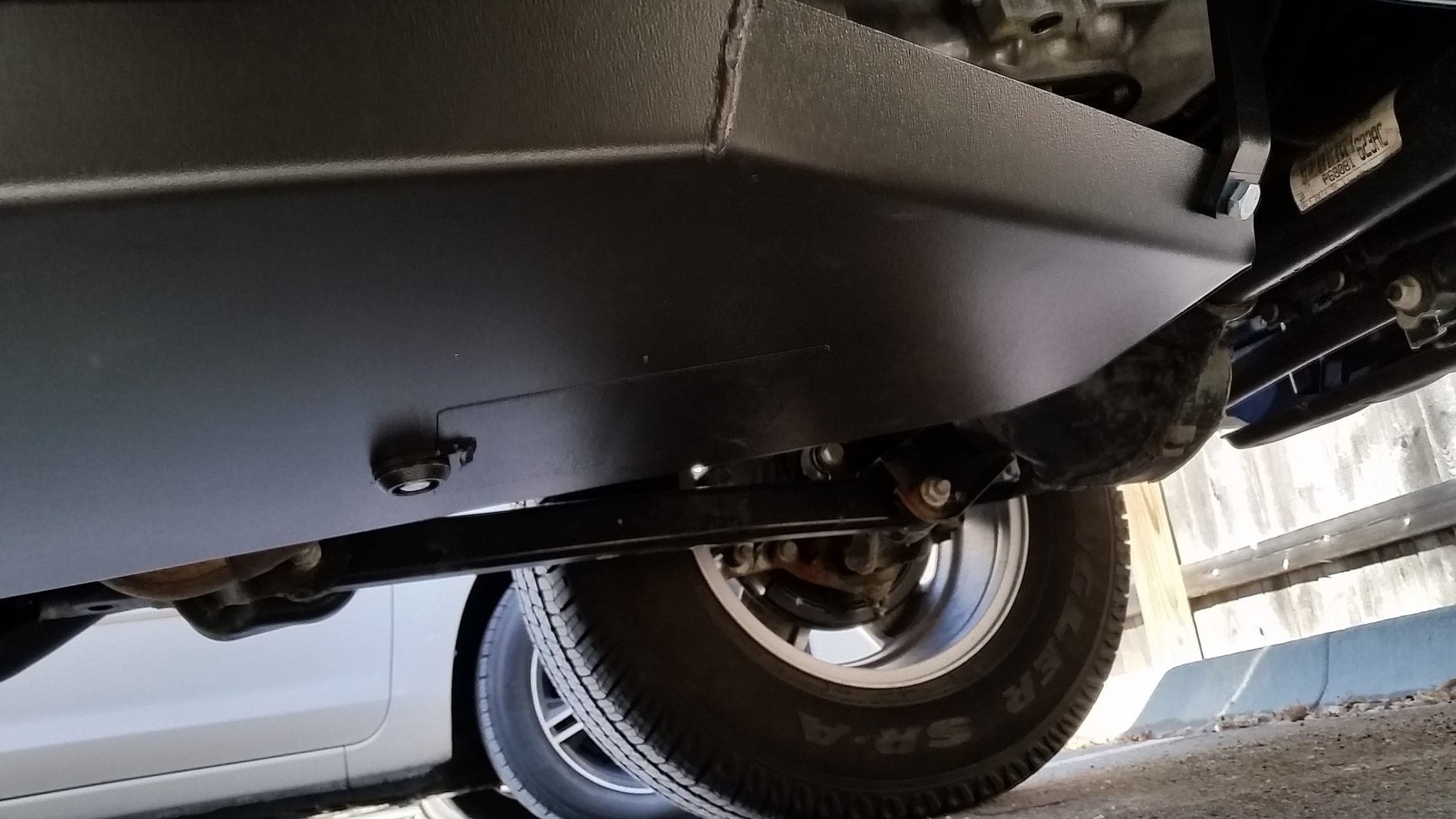
Gear yourself up
All of your focus may be on the trail or your vehicle, but don’t forget about yourself and your passengers. Wear comfortable shoes, at worst you may be walking out to seek help. Dress for the weather and the occasion – if you’re heading up into alpine summits prepare for all seasons any time of the year – it could be cold and rainy one second, snowing the next or blustery and dry.
Off Road Trail and wheeling tips
These simple off road driving tips may save your skin or make the difference between a miserable day at the trails and having a blast.
Buddy System
Drive with a friend if you can. If you get stuck, you have some help, and if there is an emergency, you’re not out there all alone. By driving with a friend, I don’t just mean a friend sitting in the car with you – that’s your co-pilot. I mean, drive with an entourage – it’s safer, especially on mountain or desert excursions where you have multiple vehicles. A buddy with a winch, tow strap or hi-jack is a great buddy to have, and if you have this equipment, you will be a great buddy to others.
Drive within your comfort zone
Don’t do something you’re not comfortable with. Your jeep, truck or off road vehicle no matter how new, fancy or decked out it is, is only as good as the person driving it. Get some experience under your belt and don’t expect your vehicle to be a magic trail machine. A friend who has done the trails or can help you “spot” your line is invaluable in staying in your comfort zone.
Have a co-pilot
Your co-pilot is your spotter, navigator, DJ, drink getter and all-around general superstar helper. This person is there to help you stay focused on the trail/road. They’re the ones who will get out in tight spots and help you drive up and line up – find your line to have the safest, best route. They’re also better at being the DJ, checking the map and taking photos letting you focus on the road and safety of everyone in the vehicle and everyone around you.
Find your line
Your line is an imaginary line that covers your wheels – where you want them to go and where they need to go and where your vehicle clearance needs to be. Your co-pilot is excellent at getting out and helping you see what you can’t see. Simple hand signals and clear communications are great in staying on this line. Just remember, we’re all human, and you’re driving thousands of pounds on unmaintained roads (or volunteer-maintained trails), and shit will happen. Stop, take a breath, reassess, communicate, and try again. Don’t stick to a line at all costs; it’s better to back up, try something new and reassess as needed.
Water Crossing
Be aware of all water crossings. Understand that in many areas where the streams are from snowfall that the best time to cross a stream is early in the morning. As the day progresses the afternoon sun and heat will cause the streams to swell up from snowmelt and they may be impassible in the heat of the day. Just because you made it across in the morning doesn’t guarantee it is safe to cross in the afternoon.
If you don’t know the depth of your water crossing, you may want to “walk the crossing” and use a pole/stick to help provide balance as well as “poke” forward to feel the ground. You want to make sure that all water crossings you attempt are within safe approach and egress so that you will not flood your vehicle or get washed away. Remember that during approach if there is a bank that the front end of your vehicle will dip. If you have a snorkel, make sure your snorkel remains above the waterline. Turn around, don’t drown.
Be Flexible
Know that things will break, the weather will change, routes may close, trails may close, and things may not go as planned. Always be flexible to change your plans. The worst thing that can happen is you push yourself to do something you shouldn’t do. For example, If you’re in a rental Jeep driving the alpine loop, and you have to be back to turn the vehicle in or face a late fee – call in and let them know you will be late. Don’t end up rushing yourself and putting yourself or your party at risk unnecessarily.
If you find yourself getting stuck on the trail, having a hard time or just trying to brute force yourself across the trail, it may be time to re-think your plans and re-assess just how safe or smart it is to continue. Take some time out, find a safe place to park and get yourself together. If you follow our advice of having a friend and a co-pilot talk to them and get a consensus on moving forward, trying an alternate route, or turning around. It’s better to be safe and flexible and to stay within your comfort zone than to start making mistake after mistake and ruining your experience and your day – or much worse.
In the end, you may just have to do that upgrade you always wanted before you can conquer that trail. That isn’t a terrible thing to learn and it’s best to learn and know this before you make expensive mistakes that may prevent you from upgrading as you want and having to spend money to fix what you don’t want to fix.
Rules of the trail.
Let’s face it; these aren’t really “rules of trail driving” but more of an off road etiquette. They’re practical, smart, and safe offroad driving techniques to make sure everyone is out having fun and enjoying their experience.
Most clubs, private ranches and trail guides will recommend these simple off road driving rules:
- Yield to traffic driving uphill, they have the right of way.
- If you pull over to take photos, take a break or for any reason need to stop, make sure you find a place that is safe to pull over and won’t obstruct traffic or cause safety concerns for other vehicles or passengers.
- When you park, be sure to use your parking brake. Do not rely on your automatic transmission or first gear to keep your vehicle from rolling away.
- If you’re on single track roads and see traffic coming up, try and find a safe spot to allow opposing traffic to pass safely. Uphill traffic has the right-of-way.
We’re a firm believer in treading lightly – https://www.treadlightly.org/
- Stay on marked trails – don’t veer off and make new trails. Volunteers and OHV organizations maintain many of these trails and they often cross preserved and protected lands.
- Stay away from wild animals – give them space and respect their natural habitat.
- Do not drive in designated wilderness areas – these are preserved habitats for a reason.
- Get permission from private landowners before entering private property.
- Pack it in, pack it out. Whatever you bring with you, make sure it leaves with you.
- Obey closures and posted signs. These aren’t temptations to be driven around or ignored.
Did you know?
National Park roads, US forest service roads, and BLM roads are numbered roads; this usually means that registered vehicles are required, and drivers must be licensed.
Numbered roads also generally mean that your auto insurance may cover liability and damages or loss on such roads & trails.
If you drive on private ranches or club trails, contact your insurance company to make sure your policy or the clubs policy can cover your vehicle for any losses.
As always, contact your insurance company to understand your coverage and possible premium options you have for off-roading.
Have fun!
All said and done; we hope you have a safe and exciting off-road experience. If you have any comments or suggestions about off road driving, please comment below!

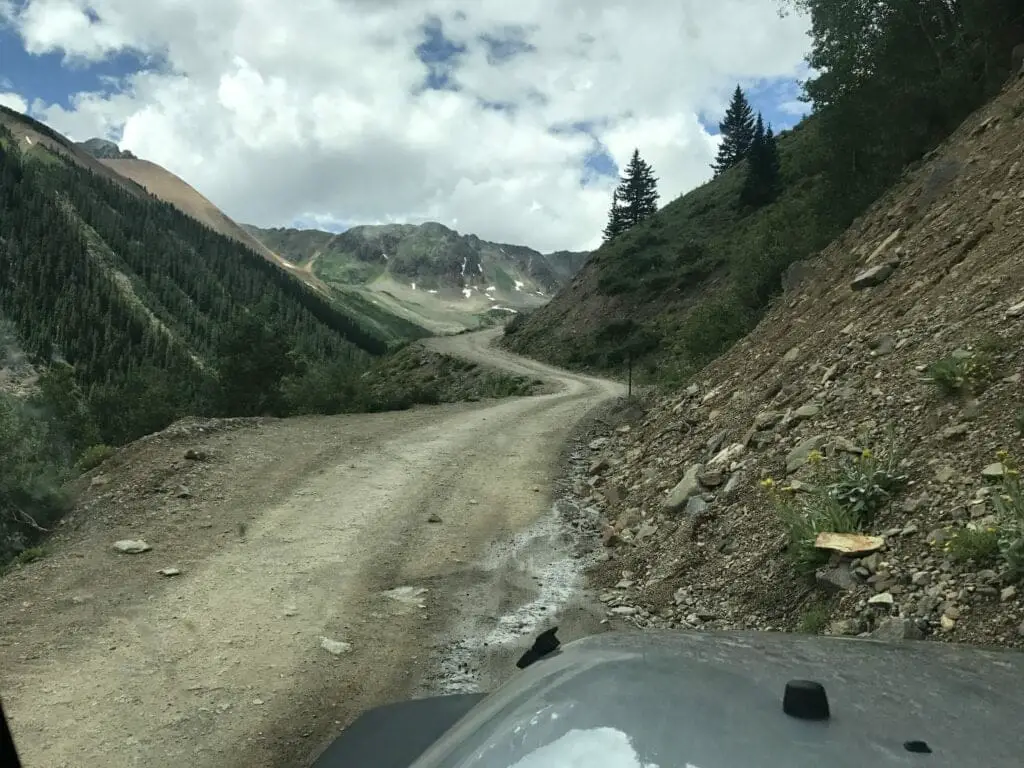
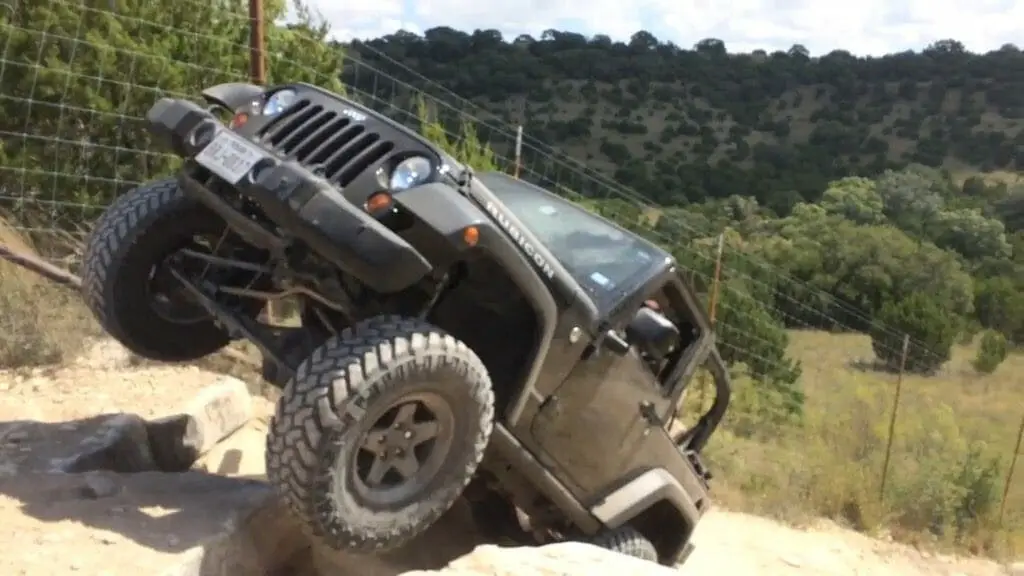
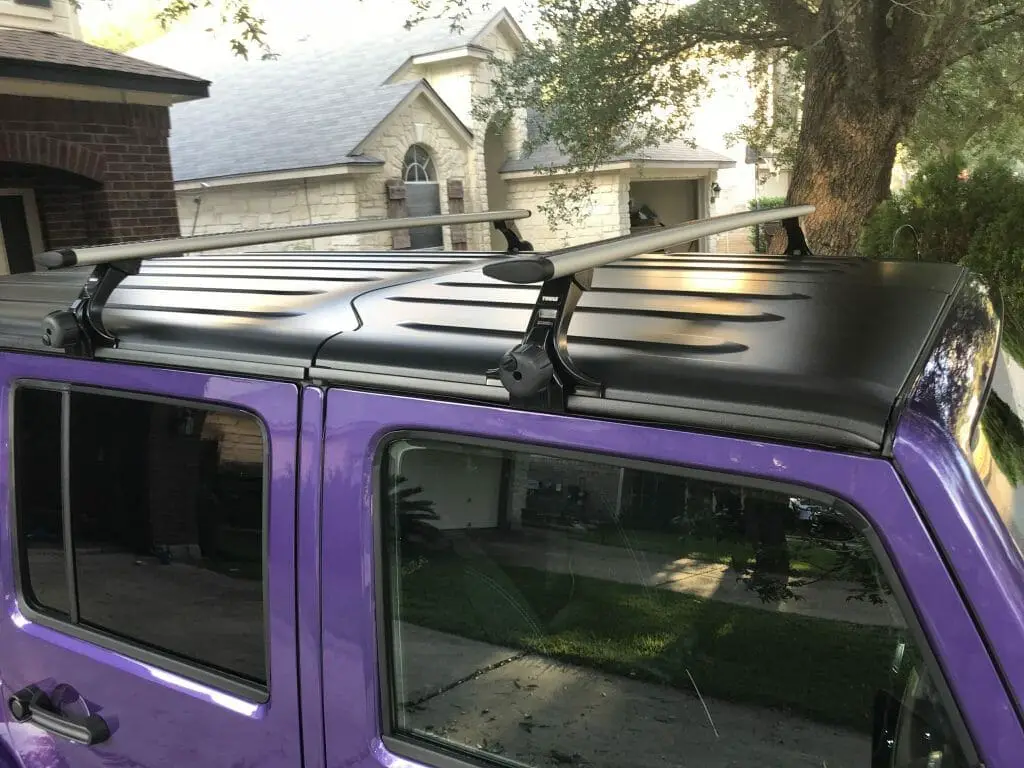
I really like your advice to try and find your “comfort zone” when you are operating an off-road vehicle, especially when you are in dangerous terrain. My wife and I are thinking of going off-roading for my son’s birthday, but neither of us has ever gone off-roading before. If I am driving, I will be sure to keep well within my comfort zone.
What if any tire gets punctured? Do you recommend always keeping at least 1 extra tire?
I take it foregranted on my Jeep that I have a 5th tire. If you drive other vehicles it is important to have an extra spare indeed. (and that you know you can rely on it, don’t let it be that almost destroyed tire with 3 plugs)
Thanks a bunch for sharing these tips, especially your “Rules of the Trail” section. I was not aware of several of those tips. I’m curious, have you ever had a run-in with any private property owners? If so, how did it turn out?
Many people take off-roading safety lightly! Love your tips!! Especially I agree with Buddy System — It can be a real-life saver man! – Chris